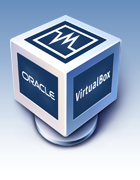 Hi all, now plays second Virtualbox tutorial: Cloning VMs.
Hi all, now plays second Virtualbox tutorial: Cloning VMs. What we need is a virtual machine and configured to your hard drive and configuration file, ie a virtual machine will be operational we want to clone.
When you clone a virtual machine from an installation, we can not do by simply copying the disk as more than one would think (including me, that's what I did the first time I put it). But if the hard copy we will not be able to use both machines on the same system, as each disc has a unique identifier.
To clone because we have to use the tool that is provided by VirtualBox "VBoxManage ." Open the console and go to the directory where we created the record. "Vdi" we want to clone. (Right now is not the default folder to me because I keep everyone in a separate directory.) If for example our UbuntuJEOS virtual machine is called, your disc will be called (by default) UbuntuJEOS.vdi. Suppose we want to call UbuntuClient01 cloned machine, which will execute the following command: VBoxManage
clonevdi UbuntuJEOS.vdi UbuntuClient01.vdi After that we have our machine cloned and ready to use! Just go to virtualbox, create a new virtual machine and choose the disk UbuntuClient01.vdi just clone.
Possible problems
cloned virtual machine in the network is not available, or the interfaces appear somewhat "strange" or simply not appear.
This is because the Debian-based systems, as Ubuntu, have a very useful feature when using real hardware, but we are annoyed by cloning VM. This feature is to assign a network interface name to a particular MAC address.
Debian, Ubuntu, and therefore does this by using udev rules, so to fix it, we simply delete the rule created for the old interface:
sudo rm / etc/udev/rules.d/70-persistent- net.rules Reboot and voila! We have new active network.



